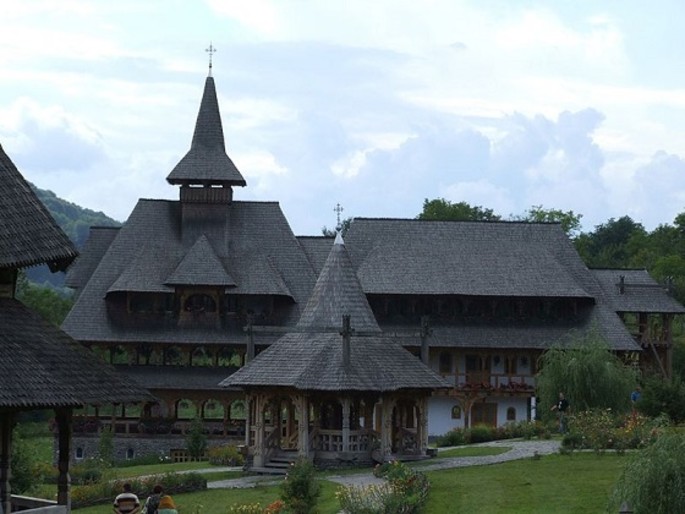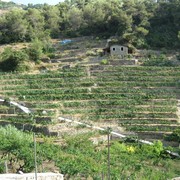Barsana is a very ancient village, attested in 1326. Located on the bank of Iza River, in a heavenly landscape, the village shelters two monastic sites. The two cloisters connected over time the earth and the sky of Maramures. Barsana Monastery, in Iza Valley, is like an icon of the Maramures soul, a sacred place where spirituality and nature in its most amazing forms join forces and send them out towards the sky.
The monastery was once a vivid flame of culture and spirituality, a preparation center for priests, cantors and painters. Unfortunately though, on the 12th of July 1791, the monastery was dissolved. As the inhabitants of Barsana wished, the monastery rose like a phoenix from the ashes. In 1993 the cornerstone of a new place of worship was set, one of the largest wooden churches in the country: 57 meters tall, 23 meters long and 12.5 meters wide.
The entire monastic complex was made of wood, under the coordination of architect Cordoș Dorel. This is a true piece of heaven, an oasis of silence and spirituality. The beauty of the buildings and of the interiors challenges the beauty of the surrounding nature.
A few kilometers away, on the Jbar hill there is an old wooden church, which belonged to the old Barsana Monastery. An impressive church, which preserves the memory of ancient times. It was erected in 1711 by the noble priest Ioan Stefanca together with other locals, giving thanks to God for the protection during the plague of 1710.
In 1739 the church was moved to Iza Valley, and in 1795 it was moved again to the village. In 1806, the church interior was repainted, by courtesy of Hodor Toader, a painter from Viseu-de-Mijloc. The painting, bearing Rococo and Baroque influences, was largely preserved in the altar and the pronaos. The icons and furniture pieces come under the same Baroque ornamental style. The iconographic program in the naos contains scenes from the Genesis, while the pronaos has scenes from the Last Judgment, from the Old Testament and from the Passions of Christ. The entire interior set is characterized by a unitary artistic vision.
The church is a masterpiece from an architectural and pictorial perspective, being included in the National Heritage and in the UNESCO World Heritage List.
Sources:
https://www.crestinortodox.ro/biserici-manastiri/manastirea-barsana-67952.html
https://ro.wikipedia.org/wiki/M%C4%83n%C4%83stirea_B%C3%A2rsana



























